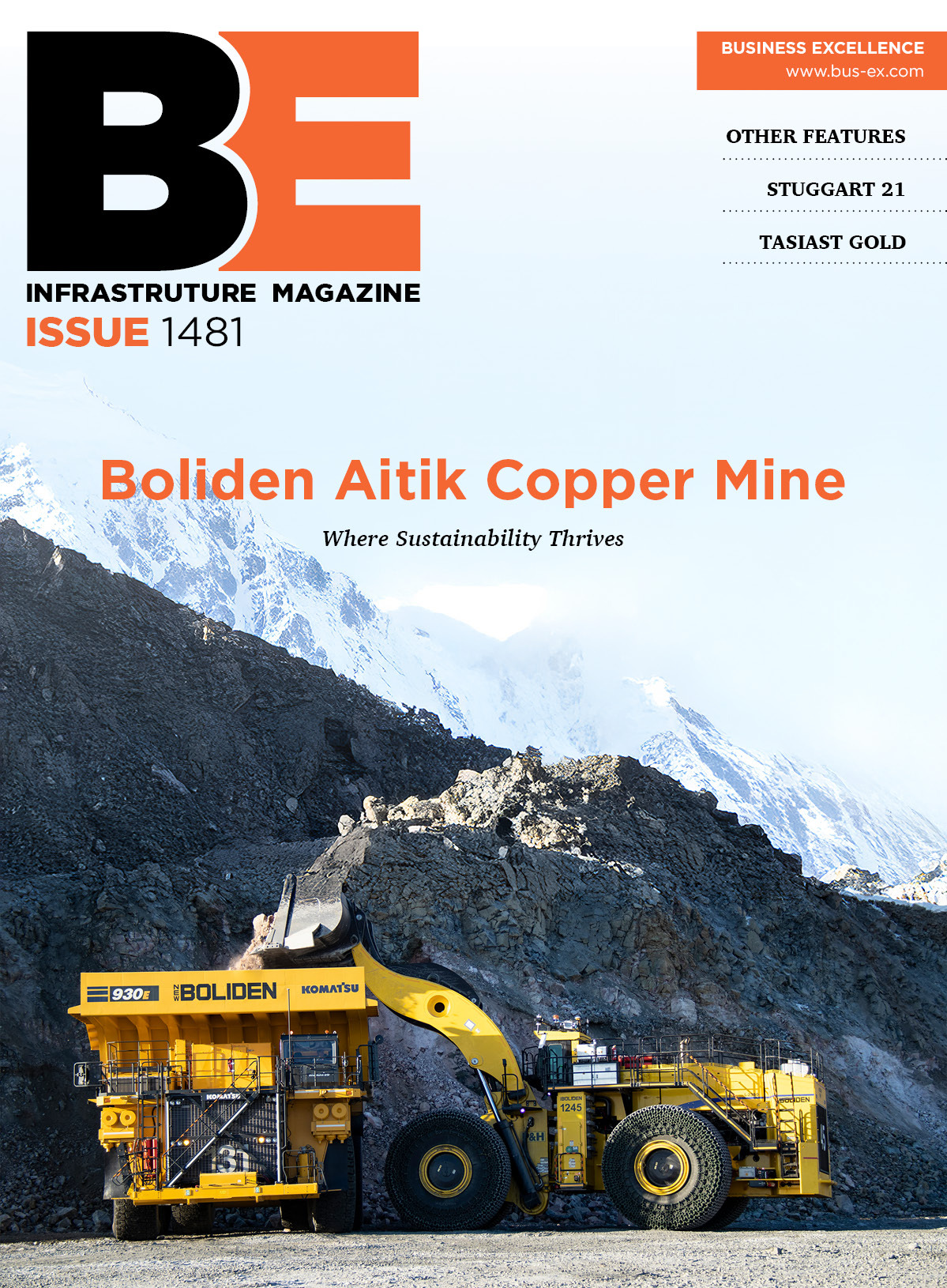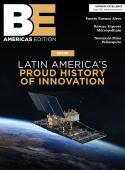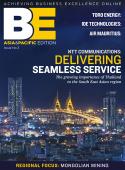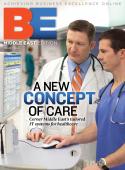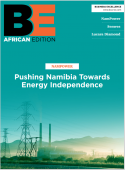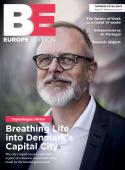Fuelling a renaissance
The R├Âssing Uranium Mine, part of the Rio Tinto Group, is enjoying a renaissance as global demand for uranium soars. Werner Ewald, manager of Mine Operations, talked to Jayne Flannery about the new ethical face of mining.
Uranium is a common element that is found in the earth all over the world. When processed into uranium oxide (U3O8), it is a fundamental building block in the creation of nuclear energy.
Nature has blessed Namibia with an unusually rich endowment of this natural resource. The R├Âssing Mine, close to the small town of Arandis in the Erongo region of the Namib Desert, is one of two uranium mines within the Rio Tinto Group. This single source produces a mighty eight per cent of the worldÔÇÖs primary produced uranium oxide. At present, approximately 4,000 tonnes of uranium oxide leave the mine each year.
Last year, the wealth created by R├Âssing through the sale of its uranium oxide, payment for services and materials, taxes to the government of Namibia and investments made in the community in which the mine operates, totalled N$2.8 billion. The companyÔÇÖs customers include nuclear power utilities in North America, Europe, Asia and Japan. All deliveries are made in strict accord with international safeguards and Namibia is a signatory of the UN Non-Proliferation Treaty, which regulates the sale of uranium oxide.
Since mining began in 1976, R├Âssing has seen its fortunes rise and decline several times in line with the fickle nature of commodity prices; on several occasions, it has been under threat of closure. Today, it is riding on something approaching the crest of a wave. Early in the millennium, it looked as if the operation to recover uranium was no longer economically viable.
ÔÇ£We had plans to close down the mine,ÔÇØ says Werner Ewald, manager of Mine Operations. ÔÇ£Then in 2005, the world market for uranium began to recover. We have since seen a total renaissance in demand as well as putting in many new measures to increase our efficiency. Now the mine is forecast to have a working life that will continue until at least 2023.ÔÇØ
In 2008, R├Âssing produced 4,108 tonnes, its highest output in the past 20 years, and there are plans to increase production of uranium oxide to 4,500 tonnes by 2012. ÔÇ£R├Âssing Uranium is now on a clear path of growth with plans to expand next year,ÔÇØ declares Ewald.┬á
The long-term market outlook is highly favourable as suppliers struggle to meet the soaring demand for uranium oxide. The demand for nuclear fuel is set to increase significantly as concerns about climate change and greenhouse gas emissions, the security of energy supplies and the increasing cost of fossil fuels all encourage a fresh look at nuclear power generation.
However, even though R├ÂssingÔÇÖs future now looks secure, long-term viability still depends on the efficient extraction and processing of the ore. ÔÇ£Our success rests on the application of technology on the one hand and the development of our people on the other,ÔÇØ he states.
The simplicity of the mine itself belies the myriad of advanced technology applied to make its operation as smooth and efficient as possible. ÔÇ£R├Âssing is a typical open pit truck and shovel operation that is three kilometres long, one and a half kilometres wide and about 350 metres deep,ÔÇØ says Ewald.
At a superficial glance, it would seem there is nothing particularly complex about drilling and shovelling uranium ore; however, accurate computer-controlled drilling at exactly the right elevation leads to better fragmentation of the rock which in turn leads to easier loading. High tech scanners are then used to determine whether it makes economic sense to process loads with cut-off grades fluctuating with ore characteristics and according to market prices.
The modular mining system used at R├Âssing is a standard model used in the Rio Tinto Group and is supported by global positioning system (GPS) technology. ÔÇ£This means we know exactly where each truck is at any given time and what it is doing. Then we can ensure that it is put to optimum use. The decision on how best to deploy our resources is made according to complex algorithms, not human judgment,ÔÇØ he says.┬á
Meanwhile, a new online engine health monitoring system reports back in real time on the state of the 28 180-tonne trucks that make up the truck fleet. ÔÇ£We estimate that being able to take a proactive stance on planned maintenance has generated savings in the region of $1 million since we implemented the system about eight months ago. Our truck utilisation rates have improved significantly due to better truck dispatching,ÔÇØ he says.┬á
R├Âssing is a keen practitioner of the aligning business system (ABS), a Rio Tinto business improvement initiative to establish optimum global business processes across a wide range of activities such as payroll, health, safety and the environment, human resources, maintenance planning and paying suppliers. ÔÇ£All Rio Tinto operations across the globe have adopted a common SAP platform to support the implementation of ABS,ÔÇØ he explains. ÔÇ£Having a set of global metrics means that it is much easier to benchmark efficiencies across all the Rio Tinto operations.ÔÇØ┬á
In 2007, a business improvement department was established, to focus on introducing ways to embed the process of participation and empowerment throughout R├Âssing. People, Ewald believes, are the other half of the equation and the best technology in the world is redundant if a companyÔÇÖs personnel do not understand and support its objectives, or cannot perform the tasks that are necessary. Training initiatives include scholarships for graduates and support for distance learning, while 122 employees currently receive educational assistance for their children.
Ewald comments: ÔÇ£Our organisation now has close to 1,500 people with about a further 1,000 contractors. Their development is fundamental, particularly in areas related to health, safety and the environment, as well as the specific technical skills needed to carry out their work. We spend about N$32 million annually on the education and training of our workforce and at the moment we have approximately 130 people training for a trade.
ÔÇ£Although we have a policy of only employing those persons we need, we always train more,ÔÇØ he continues. ÔÇ£New mines are constantly being developed in the Erongo region and the need for qualified people is sure to increase. Namibia has a relatively small population and it can be difficult to recruit specialised people within the country. Neither is it a simple matter to bring in people from external countries. It is a big boost for the economy generally if the skills Namibia needs in mining and engineering can be home-grown. We see our training as an investment in the countryÔÇÖs future.ÔÇØ
Education and training are key facets of a wider drive to integrate sustainable development into every aspect of the business. Namibia achieved independence in 1990 and R├Âssing, as one of the countryÔÇÖs most significant mining operations, has taken a lead in corporate governance and is eager to demonstrate the contribution it can make to NamibiaÔÇÖs broader social and economic development. The neighbouring town of Arandis, with a population of almost 5,000, is a natural focal point and home to many initiatives in partnership with the local town council.
In addition, much work is carried out by the R├Âssing Foundation. This was established in 1978 as a separate entity, to implement and facilitate corporate social responsibility activities. Today, the Foundation undertakes many activities across a broad spectrum of community development areas. In Arandis, these include education, health, poverty alleviation, innovation, the environment and enterprise development. The Arandis Free to Grow Peer Educator Programme has been a particular success, training a total of 533 community members in life skills and financial literacy.
At the Ministry of EducationÔÇÖs request, the Foundation supports the implementation of the Education and Training Sector Improvement Programme (ETSIP), part of NamibiaÔÇÖs 30-year development plan known as Vision 2030. In this way, the Foundation addresses the needs of local industry as high-school graduates qualify for employment, or enter tertiary education and training institutions.
The R├Âssing Foundation also promotes the advancement of the living standards of all NamibiaÔÇÖs people by supporting small-scale minersÔÇÖ initiatives, the Community-Based Natural Resource Management (CBNRM) programme, and small to medium scale enterprises, especially those led by young people.
Arandis is still highly dependent on the benefits flowing into its economy from R├ÂssingÔÇÖs mining activities. Planning for the long-term sustainability of the community in the face of the inevitable closure of the mine at some point in the future is a priority. This means diversification at the earliest possible opportunity. A baseline study was commissioned in 2005 to evaluate the townÔÇÖs sustainability and since then, a sustainable livelihood strategy has been formulated.
ÔÇ£At present the mine is the lifeblood of the local community but we need to educate rural communities on the importance of our wildlife and the natural environment,ÔÇØ explains Ewald. ÔÇ£These will allow for the development of tourism if they are preserved and nurtured. Leadership capacity building is another crucial area, because effective leaders in our communities ensure a successful long-term future for all,ÔÇØ he says.
A separate R├Âssing Environmental Rehabilitation Fund has now been created to rehabilitate the environment when mining finally ceases. However, closure of the mine is on the distant horizon. ÔÇ£We are seeking out new ore deposits all the time as well as better processes for leaching. Our vision is to continue to be a safe, significant and growing long-term supplier of uranium to the worldÔÇÖs nuclear power industry for the generation of electricity,ÔÇØ he concludes.



